Garlic, the “voodoo bulb” – love it or hate it (part 2)
It´s not possible to imagine the phytogenic universe without this herb: garlic. Be impressed by its diversity of constituents that are described in our 2nd blog part …
In our first part we gave you an overview of the look and the history of garlic, one of the most used spice plants worldwide. But which compounds of garlic are responsible for its typical smell? And which other precious effective ingredients can we find in our ‘voodoo bulb’? Read on and find out…
Following numerous scientific studies, garlic has regained fame today. Though it is to say, that so far, not all ingredients have been analyzed down to the last detail. However, related to garlic, there is always talk of the valuable secondary plant substances, sulfides. But it’s not only these sulfides, garlic owes its good reputation to, the list of precious ingredients is long.
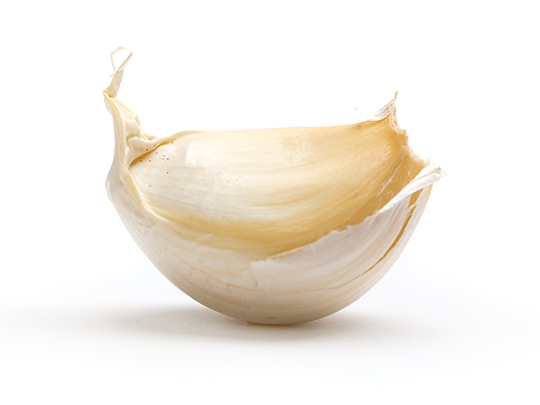
After reading this article, you will know about...
…the main active ingredients of garlic
…what allistatin and garlicin have to to with the intestinal microbiota
…the health-promoting effects of garlic
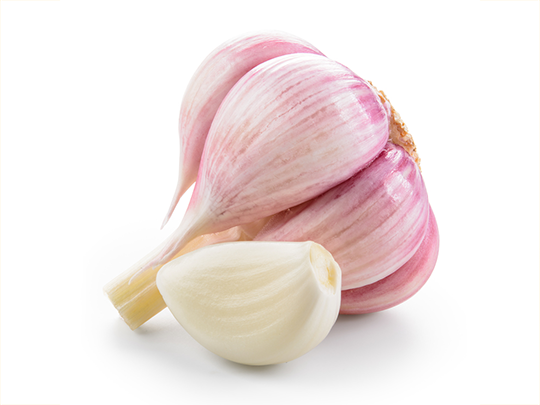
Let´s have an outline on the considerable compounds of this superfood:
Despite other lily plants, such as onions and leeks, which are also important sources of sulfides, the majority of scientific studies have been carried out on garlic sulfides. No doubt, garlic serves as excellent source for many important active substances, but it is the sulfur compounds that are seen as its spotlight nutrients regarding overall health benefits. Here we are talking about sulfur-containing amino acids and peptides (i.e. cysteine, glutathione), thiosulfinates (i.e. allicin), sulfoxides (i.e. alliin), sulfides, diallyl sulfides and polysulfides (i.e. diallyl disulfide, diallyl trisulfide), vinyldithiin (i.e. 1,2-vinyldithiin) and ajoenes (i.e. E-ajoene). Ajoene is a product of the decomposition of allicin and is said to cause the antithrombotic properties of garlic. It is an extremely effective ingredient of garlic, but only develops when the garlic is heated.
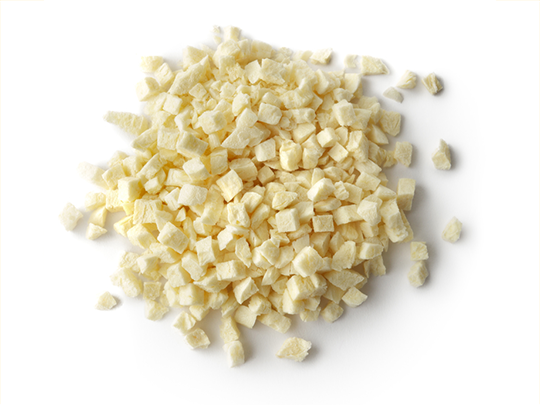
Alliin and allicin, probably the two most important ingredients of garlic, are created by a chemical process during growth. In a study, high antibacterial activity of freshly prepared garlic clove was observed, and soon attributed to an oxygenated sulfur compound. They called it allicin and it was soon found out, that allicin had a precursor, alliin. Alliin, probably the genuine mother substance of garlic, a sulfoxide and derivative of the amino acid cysteine, is converted into allicin when fresh garlic is chopped or crushed. Alliin itself has no bactericidal action. A specific enzyme, alliinase, converts alliin into allicin (diallyl thiosulfinate), a potent bactericidal substance. But the generated allicin is rather unstable and spontaneously transforms into a series of other sulfur-containing compounds such as di- and trisulfides (in water), or ajoene and vinyldithiin (in oil). It is these sulfur-containing compounds that are responsible for the typical smell of garlic and some of which have been investigated for their cancer preventive activity. Above, most of the other health-promoting effects of garlic (i.e. anti-oxidant, antimicrobial, antithrombotic, immunostimulant) are attributed to this big diversity of bio actives.
The healthy leek plant also contains various vitamins (vitamin A, B1, B3, B5, B6, C, E, H), minerals and trace elements (i.e. potassium, copper, molybdenum, selenium, iodine, germanium). Though in order to absorb a significant amount of these substances via garlic, you have to consume a fairly large quantity of this spice plant. It is easier to meet this need with certain types of vegetables. Other with the scordines, that seem to suppress the accumulation of small blood cells (thrombocytes), which leads to hemodilution, thus having a positive effect on circulation and may help to protect against atherosclerosis. Similar with adenosine, one of the four so-called nucleic acids, having an extremely positive effect on blood pressure and general blood circulation in the body. Also, flavonoids are present in garlic and with their blood pressure lowering characteristics, do a positive contribution to various therapeutic successes of garlic treatment.
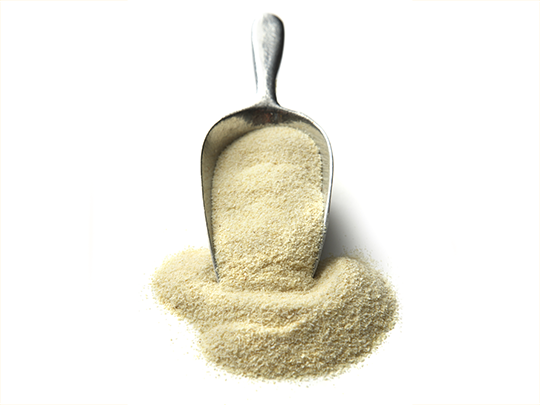
Recently, garlicin and allistatin have gained increased interest, as natural ‘antibiotics’ that occur in plants belonging to the Allium group. Garlicin seems to be effective against E. coli., whereas allistatin may have an impact on S. aureus. In contrast to the chemical club, these substances also promote a healthy intestinal microbiota. As the intestinal microbiota is important for a strong immune system, one reaches into the other. This already brings us to our last, important ingredient of the popular bulb: enzymes. Above many other enzymes of garlic, lysozyme is of great importance, as it cleans cell walls, especially of gram-positive bacteria, and it may possibly act as mediator of the antitumor functions of macrophages.
Do you want the entire article as PDF including all references?
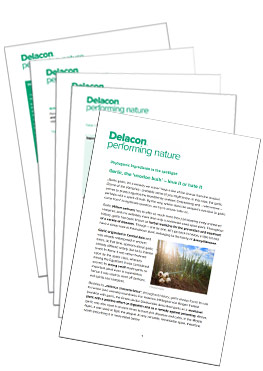
You are only one click away.
Since time immemorial garlic has been valued as remedy in humans and animals.

Elisabeth Rohrer
After her study in agriculture sciences at the university of natural resources and life sciences in Vienna, Elisabeth joined the Delacon team in December 2013 as Technical Communications Manager - a position, she always exerted with pleasure. Since 2021, her task areas have been extended and thus, she is also supporting colleagues in writing offside the technical focus as Content Manager. Elisabeth describes herself as a great animal and nature lover and prefers to spend her free time high up in the mountains with her little family, away from the hustle and bustle.










